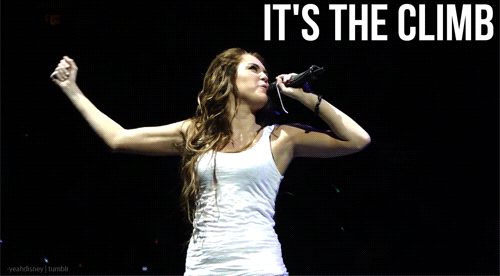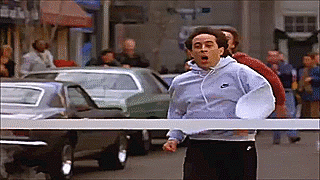Marketing Campaigns: It’s a Marathon, Not a Sprint

It was a beautiful November day in 2015 when I spectated my first marathon in NYC. Standing at mile 23, I observed thousands and thousands of runners making their way down 5th Avenue to the Central Park entrance, so close to finishing their 26.2-mile trek. At the time, I didn’t quite understand what it took to get to that moment, but it inspired me to sign up for the next year’s race.
Since then, I’ve trained for and completed two marathons, both of which taught me many things, not only about running, but about hard work, dedication, focus and... marketing campaigns.
As a project manager at Nebo, I began to notice the similarities between training for a marathon and running a marketing campaign. I had set and defined goals for my marathon, similar to how Nebo and our clients have goals for all campaigns. My ability to manage my time was a true gift, especially as the runs got longer and more frequent. And patience, dedication and focus are a priority of life.
Marathon training is hard. And sometimes, agency life is too, especially when you’re building a brand-new marketing campaign. But both can also be extremely rewarding. All the early mornings, sweat, tears and exhaustion make crossing that finish line even sweeter.
It turns out marathons and marketing are pretty similar. Here’s how I prep for both. Let’s dive (run?) right in.
Phase 0: Research & Planning

Marathon: One doesn’t just jump into running 26.2 miles. In fact, one doesn’t even jump straight to training. There’s pre-training, too.
With the start of official marathon training a few weeks out, this is the time to evaluate your predetermined training plan, review current fitness levels and kick off the training cycle with easy miles and basic strength training exercises to prep the body for what’s to come.
Being a project manager, I prefer a Google Spreadsheet, which I can access and update from anywhere. Using training plans built for my fitness level and goals, I create a training calendar, accounting for times I know I’ll be traveling, personal preferences for long run days, etc. It’s also a great excuse to buy new running gear, like my favorite Brooks Running sneakers and Nuun hydration tablets.
Are you tired yet?
Marketing: Much like long-distance running, going from 0 to 60 when you’re creating a campaign can do more harm than good. During this phase, conducting thorough research is a must. This includes researching the audience, learning what resonates with them, building buyer personas, crafting what the messaging should be and more.
From there, extensive planning is what will set up any campaign for the most success (similar to the early easy miles and training plan creation for the marathon). Build a base so that you’re ready for every step ahead, rather than jumping in cold-turkey.
Phase 1: Build Up

Marathon: It’s finally time: the official start of training. Over the next few weeks, mileage will build and cross-training workouts will increase. As these weeks pass, the training gets tougher — but so do you. While you might start to second guess why you signed up for this race (those long runs will do that to you), you’ll also have moments where you feel your strongest.
To stay motivated through training, here is some advice:
- Focus on your goals. Remind yourself why you started.
- Record your runs. Beyond your preferred tracker (mine is my Garmin watch), write down how it felt, what you accomplished, etc.. This way, you can look back at the work you’ve put in.
- Incorporate rest days and reward yourself. Rest is vital — and, in my opinion, so are cookies and pizza.
Marketing: The research is complete, and you’re now on solid ground to know who your audience is and what their wants and needs are. In this first official phase, you’ll build out the core of your campaign: the overall strategy, specific tactics, and creative assets. Similar to marathon training, this is when you can start to feel fatigued, in a way, wishing that launch day was here so that you could see results.
Remember: focus on your goals and keep track of the items you’ve accomplished. When you look back at the project plan, the satisfaction of seeing how far you’ve come will give you a surge of adrenaline to push toward the finish line.
Phase 2: Build Out

Marathon: The time and energy required to make it through what we call “peak week” — the hardest week of training before taper to race day — is immense, particularly thanks to the weeks of training you’ve already completed. The good news is, once peak week is over, taper starts. Taper is the time to heavily cut back on mileage and focus on resting your body and preparing for race day.
Nutrition, hydration and stretching (including my least favorite thing, foam rolling) should be top of mind. Make sure everything is ready for race day. Decide what you’ll wear, finalize your plan for fuel, etc.
Marketing: It’s almost the moment you’ve been waiting for: campaign launch. The build out is a crucial time for a marketing campaign after months of researching, planning and strategizing.
Now is the time to review everything with a fine-toothed comb, reassuring everything is set up properly and ready to go. Conduct a final QA of landing pages and creative assets, complete tests for desired tracking capabilities and build out the campaigns for launch.
Phase 3: Run the Race

Marathon: The big day is here. As you start the race, remember not to get caught up in the excitement. Pace yourself through the early miles to make sure you have enough energy in the tank to make it through all 26.2 miles. Personally, this is the hardest part for me — it’s such an exciting moment! I check my watch each mile to ensure I’m not running under goal pace, and monitor it through the race, also taking into account how my body feels.
As the miles go by, also make sure to monitor your fuel intake. I typically have a few Sport Beans (or other energy gel) every 3-4 miles, drink water at every available station, and have a Vanilla Crisp PowerBar ready for when I need something a little heavier around miles 13 - 16.
Marketing: Preferably with a little celebratory dance, it’s time to launch the campaigns. As with marathon training, the heavy lifting is over, thanks to the hard work in the earlier stages. After launching, monitor, analyze and optimize to make sure everything is running smoothly and performing well to produce the best results.
Phase 4: Cross the Finish Line

Marathon: Seeing the finish line will give you a final surge of adrenaline and, perhaps, even make you a little emotional. (I know I teared up crossing the finish line of both the marathons I’ve run.) With the end in sight, make sure to really enjoy the moment. Embrace the fact that you’re about to accomplish something that some can only dream of.
After you’ve crossed the line, check your finish time and show off by taking pictures with your new, awesome medal. Wear it around your neck with pride. And once you’ve celebrated the accomplishment with some food, you can conduct a brief race analysis to review your performance a little more closely.
Marketing: You’ve researched, strategized, launched and optimized. Like crossing the finish line of a marathon, after all of the hard work, you can now showcase that work by reporting back on results. Whether it’s showcasing the number of people you reached, or the number of conversions you drove, this is your time to shine.
I like to think that the marathons I’ve trained for have helped to improve my skills as a project manager. In the fast-paced and ever-changing marketing world, it’s important to remember that it’s a marathon, not a sprint. Take your time when diving into new things. In marathons, you need to build your base and then your mileage — you can’t just jump in at full speed. For marketing campaigns, you need to do the research, set strategic goals, and optimize your campaigns to be successful.
Most importantly, throughout all things in life, always remember to celebrate successes — big and small — and embrace the obstacles. Anything that comes easy isn’t worth it, and it makes crossing that finish line mean even more.
Comments
Add A CommentThis is a great thing, I think everyone feels this information is very valuable, thank you
The marketing campaign you share is extremely attractive. I have learned a lot from your article.
Haha it is look likes a sprint but not like a marathon, little confused.
A lot of people will be benefited from this writing. Cheers!